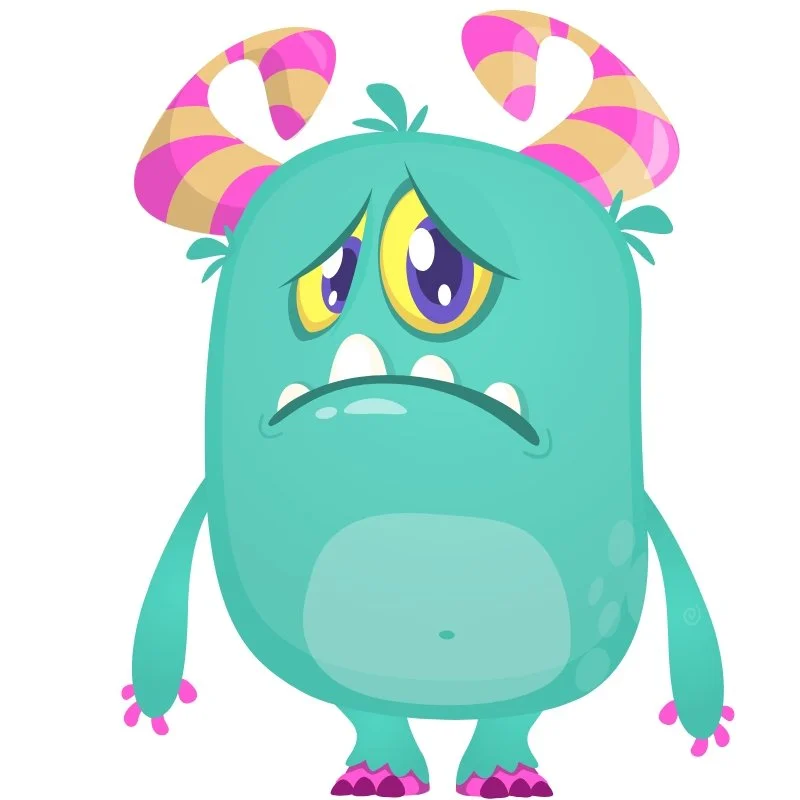Wisp – The Loneliness and Social Void Monster
Wisp is one of the Visiting Neuro Monsters. Wisp represents the ache of loneliness and the hollow emptiness of social void that can settle in when connection feels distant or absent. Known as the Loneliness and Social Void Monster, Wisp embodies the quiet longing for companionship, understanding, and belonging. Within the Neuro Monsters Universe, Wisp reveals how isolation affects both brain and body, shaping emotional states and reinforcing feelings of disconnection.
The Symbolic Role of Wisp
Wisp symbolizes the thin, drifting presence of emptiness that hovers when relationships feel out of reach. Its presence shows up when you feel invisible in a crowded room, when you yearn for closeness but hesitate to reach out, or when silence deepens the sense of absence. Symbolically, Wisp represents the space between self and others, a gap filled with longing and uncertainty. By naming Wisp you begin to notice that loneliness is not proof of unworthiness but a signal of unmet connection needs.
Wisp often appears as a faint, translucent figure that flickers in and out of sight. Its form is fragile, almost dissolving into air, symbolizing the way loneliness makes you feel insubstantial or unseen. Facing Wisp with emotional neutrality allows you to hold the ache of loneliness without letting it erase your sense of self.
Loneliness and Social Void in the Brain
In neuroscience terms Wisp is tied to the anterior cingulate cortex, the insula, and the default mode network. The anterior cingulate cortex processes the social pain of exclusion, activating circuits that overlap with physical pain. The insula registers the visceral emptiness and bodily discomfort of isolation. The default mode network amplifies self-focused rumination, deepening the sense of being cut off from others.
Wisp symbolizes this loop where the nervous system interprets disconnection as threat, magnifying the emotional experience of loneliness. The brain reacts as though belonging is at risk, reinforcing the ache of isolation.
The Protective Instinct Behind Wisp
Although it can feel unbearable, Wisp’s instinct is protective. Loneliness is the nervous system’s way of alerting you that connection and belonging are vital for survival. The purpose is to motivate you to seek companionship, nurture bonds, and restore social ties. The challenge is that Wisp amplifies the pain so strongly that it can discourage reaching out, creating cycles of deeper isolation. By seeing the protective purpose behind Wisp you can begin to treat loneliness as a guide toward reconnection rather than as a verdict of worthlessness.
Training with Wisp
Training with Wisp means learning how to respond to loneliness with gentle reconnection to both yourself and others. Cognitive Neuro Therapy emphasizes naming loneliness neutrally and creating intentional practices for belonging.
When Wisp appears you can practice the following steps. Pause and acknowledge the ache of loneliness without judgment. Name it as disconnection rather than as rejection. Take one small action that nurtures connection, such as reaching out to a friend, joining a group, or even engaging with meaningful symbols of community. If external connection is not available, focus on internal practices that strengthen self-bonding, such as journaling, creating art, or grounding in memory of supportive moments.
Over time Wisp begins to soften not by vanishing but by being met. You learn that loneliness is a signal of need, not proof of isolation. By approaching Wisp with compassion, you turn emptiness into an invitation to build connection. Wisp becomes a reminder that the ache of longing points not to failure but to the enduring human need for belonging and shared presence.


